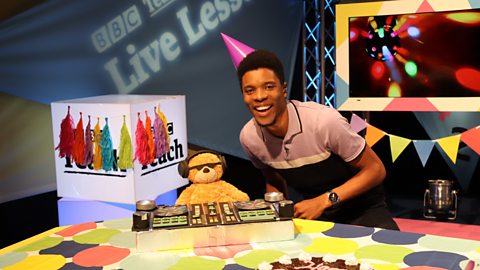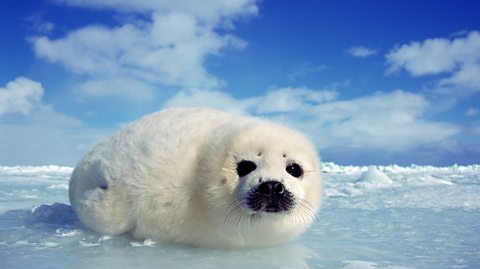
One of the issues with climate change is that itβs really hard to see. But in the case of harp seals, itβs really quite simple. If we lose the sea ice in the Arctic, we lose the harp seals.
By Dr James Grecian - Marine Ecologist and Frozen Planet II scientist
Dr James Grecian is a post-doctoral researcher in the Department of Geography at Durham University. He is an expert in the ecology of large marine vertebrates such as seabirds and seals. His work studying harp seal pups is featured in ΒιΆΉΤΌΕΔ Oneβs Frozen Planet II and he appears as a guest expert in the new Frozen Planet II Science Live Lesson for 7-11 year-olds, which looks at the impact of climate change.

The story of the harp seal
One of the issues with climate change is that it is hard to see the impacts in the everyday. Small incremental changes to temperature arenβt visible to us in our day-to-day life. Shifting baselines make it hard for children today to comprehend how many more frosty mornings we, our parents, or our grandparents experienced as children. For me, shedding light on the way climate change is impacting our planet was one of the key lessons our harp seal story could help Frozen Planet II with.
In the Arctic, the pack ice forms up in winter and expands southward as it gets cold. In the spring, as temperatures warm up, this ice begins to melt and retreat northwards again. This natural cycle has taken place for thousands of years. The harp seal life cycle is intimately linked to the sea ice. They use the southern extent of the winter ice as a nursery and migrate north to feed in the high Arctic as the sea ice melts over spring and summer.

For our harp seals, the sea ice in the late winter and early spring is a safe place. The mothers give birth on the ice, nurse their pup for the first two weeks of their life, and even give them their first swimming lesson! After this time the pups are left on the ice while they lose their white fur and grow a grey coat. The seals are then ready to head off into the ocean on their own and begin their first migration as ice begins to melt and retreat.
Itβs crucial that the sea ice remains stable during this time, but the Arctic is changing. When sea ice conditions are poor for harp seals returning to their traditional breeding areas, they may choose to move north looking for better ice, or they may attempt to give birth on unstable ice. In recent years spring storms have broken up the sea ice just as the pups are at their most vulnerable and unfortunately many have drowned.

My hope is that our harp seal story highlights a very real consequence of climate change and that this inspires children to both protect the natural environment and learn about the climate crisis.
Scientists predict that the Arctic may be ice-free in summer as soon as 2050. Instead of year-round ice, the sea ice will only form during the cold winter. The result will be a much-reduced icepack, and one that does not extend as far south. We donβt currently know what the implications are for harp seals, but the initial signs are worrying.
My hope is that our harp seal story highlights a very real consequence of climate change and that this inspires children to both protect the natural environment and learn about the climate crisis. I donβt want this story to trigger eco-anxiety and a sense of helplessness in children, but instead to engage them and give them the drive to pursue actions that can lead to change.
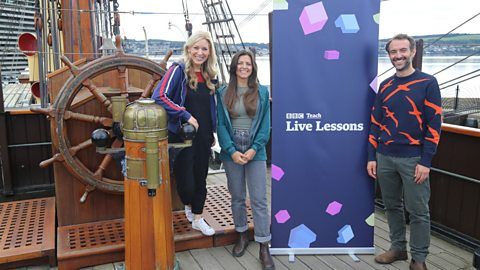
Inspiring future scientists
I grew up on a diet of David Attenborough nature documentaries. The stories told in series like βTrials of Lifeβ, βLife in the Freezerβ and βThe Life of Birdsβ are one of the reasons I pursued a career in ecology. Itβs incredible to have been involved in a landmark series like Frozen Planet II, something I wouldnβt have believed possible as a child. A proper βpinch yourselfβ moment! I feel privileged to be able to share our harp seal story with viewers around the world. I hope this story inspires children in the way nature documentaries inspired me as a child.
If the Frozen Planet II - Science Live Lesson has inspired your children, then I would encourage them to spend time outside and to visit their local nature reserves. Promoting a love of the environment during the early years provides the foundation on which we can then build a knowledge of the natural environment and integrate key skills in science. I still remember key moments from my early school years, things like pond dipping, watching tadpole metamorphosis in the classroom, and being a member of the primary school nature quiz team. There is also evidence that a close connection with nature can have positive effects on our well-being. A love of spending time outside in the natural world has stayed with me throughout my life.
If your children are interested and curious about the natural world, then I believe they will be more engaged in learning about how to protect it.

There are a broad range of links between Frozen Planet II and subjects within Science, Technology, Engineering, Maths and Medicine disciplines.
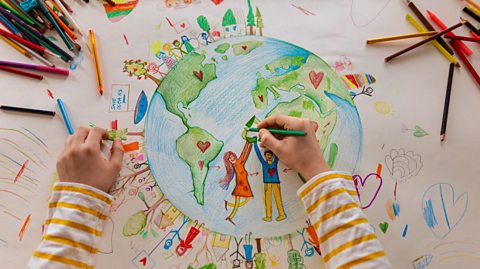
Tackling climate change may feel like a monumental task, but there are lots of small steps children can make that will help them to feel like they are doing something constructive toward the goal of helping our planet. As a child I was encouraged to βact locally, think globallyβ. Small actions in the local community; a litter pick, a beach clean, encouragement to walk or cycle rather than drive, are tangible actions that will give children agency on this issue. These simple actions may stimulate conversations at home, leading to wider action within the community.
Finally, there are a broad range of links between Frozen Planet II and subjects within Science, Technology, Engineering, Maths and Medicine disciplines. These can give children ideas about potential future careers they may be interested in, or how they might be able to tackle the climate crisis as they grow up. The scientists featured in the final episode of Frozen Planet II have backgrounds in subjects such as geography, biology, physics, and engineering. To understand how human emissions are altering the climate requires scientists with training in physics and chemistry. To measure and understand how glaciers are changing requires scientists with training in geography. To understand how seals, polar bears and penguins are responding to the changing environment requires scientists with a training in biology. In all cases these scientists were also practically minded and βhands onβ people with a sense of adventure!
Our children are our future. Encouraging an interest in the natural world, the threats it faces and how we must act to mitigate these, is a key grounding children will need to navigate the challenges ahead.

Related links
- ΒιΆΉΤΌΕΔ Teach: How to teach children about climate change
- ΒιΆΉΤΌΕΔ Bitesize: The Regenerators
- ΒιΆΉΤΌΕΔ Bitesize: Climate anxiety: How to turn your worries into action
- ΒιΆΉΤΌΕΔ Bitesize: How to talk to your child about climate change
- ΒιΆΉΤΌΕΔ Newsround: Five tips if you're feeling worried about climate change
- provides access to free teaching resources including a giant Arctic floor map aimed at Key stage 2 students
- The scientific paper published from James' harp seal tagging work is available for free
The ΒιΆΉΤΌΕΔ is not responsible for the content of external websites. By clicking the link to access the external website you will be redirected. Please note that the ΒιΆΉΤΌΕΔ is not the data controller of the personal data you enter into the external website and it is not responsible for the services provided by any external organisation. When using an external website, you are subject to their Terms and Conditions and Privacy Policy.

Watch again: Frozen Planet II - Science Live Lesson. video
Watch a lesson exploring the coldest places on Earth and the impact of climate change on the icy habitat of harp seals.
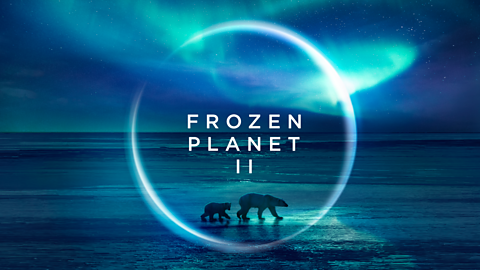
UN Climate Change Conference (COP27) - Teaching Resources. collection
To support teaching around COP27 we put together this collection of resources for use in your primary or secondary school classroom.

NEW ΒιΆΉΤΌΕΔ Teach Live Lessons for 22/23. collection
Information about our eight new interactive ΒιΆΉΤΌΕΔ Teach Live Lessons for 7-11 year olds.
